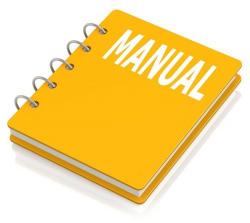Buick Roadmaster 1991-1996 Workshop Repair & Service Manual
Catalog:
Model:
Complete digital official shop manual contains service, maintenance, and troubleshooting information for the Buick Roadmaster 1991-1996. Diagnostic and repair procedures are covered in great detail to repair, maintain, rebuild, refurbish or restore your vehicle like a professional mechanic in local service/repair workshop. This cost-effective quality manual is 100% complete and intact as should be without any missing pages. It is the same factory shop manual used by dealers that guaranteed to be fully functional to save your precious time.
This manual for Buick Roadmaster 1991-1996 is divided into different sections. Each section covers a specific component or system and, in addition to the standard service procedures, includes disassembling, inspecting, and assembling instructions. A table of contents is placed at the beginning of each section. Pages are easily found by category, and each page is expandable for great detail. It is in the cross-platform PDF document format so that it works like a charm on all kinds of devices. You do not need to be skilled with a computer to use the manual.
EXCERPT:
1996 Buick Roadmaster Estate Wagon
1996-97 ENGINES 5.7L V8 - VINS P & 5
FUEL PRESSURE RELEASE
Disconnect negative battery cable. Loosen fuel tank filler cap. Connect Fuel Gauge (J-34730-1) to fuel pressure connection (wrap shop towel around fitting to avoid spillage). Install bleed hose. Turn gauge valve, and drain fuel into an appropriate
container.
COOLING SYSTEM BLEEDING
Camaro & Firebird
1. Open air bleed valve on thermostat housing (if equipped). With engine off, using the appropriate, coolant add coolant to radiator until solid stream of coolant flows from air bleed valve, then close bleed valve. Fill radiator to base of fill neck. Fill coolant recovery reservoir to "FULL HOT" mark. Install coolant recovery reservoir cap. With radiator pressure cap removed, run engine until normal operating temperature is reached (radiator inlet hose hot).
2. With engine idling, Slowly add coolant to radiator until coolant level reaches base of fill neck and stay at a constant level at base of fill neck. Install pressure cap. Add coolant to recovery reservoir to "FULL HOT" mark. Add two engine coolant supplement sealant pellets (GM P/N 3634621) or equivalent. Install coolant recovery reservoir cap. Check for leaks. Coolant level in recovery reservoir should be check after thermo-cycle has completed (full hot-to-full cold). Add coolant as necessary.
WARNING: To avoid the danger of being burned, do not remove the coolant recovery reservoir filler cap while the engine and radiator assembly are still hot. Scalding fluid and steam may be blown out under pressure.
CAUTION: When removing coolant recovery reservoir tank fill cap on a hot engine, cover cap with shop towels, slowly rotate the cap counterclockwise approximately 1/4 turn. Stop and allow the hissing to stop. After all hissing stops, continue turning counterclockwise to remove the cap.
NOTE: Care should be taken to prevent coolant from splashing onto the opti-spark distributor assembly. Place shop towels between water pump and distributor.
3. If "LOW" coolant indicator comes ON or stay ON after start up, indications are that more coolant may be required. Check coolant level in recovery reservoir.
Take appropriate action.
NOTE: The "LOW COOLANT" warning/indicator lamp may come on after this procedure. After running engine so engine heats up and cools down 3 times. If the "LOW COOLANT" warning/indicator lamp still does not go out and coolant is above "FULL COLD" mark in reservoir assembly, there is a fault with the circuit. Troubleshoot and repair as necessary.
NOTE: If at any time the "TEMP" warning/indicator lamp comes on, immediate action is required. Turn off engine and allow vehicle to cool. Do not remove coolant recovery cap at this time.
...





